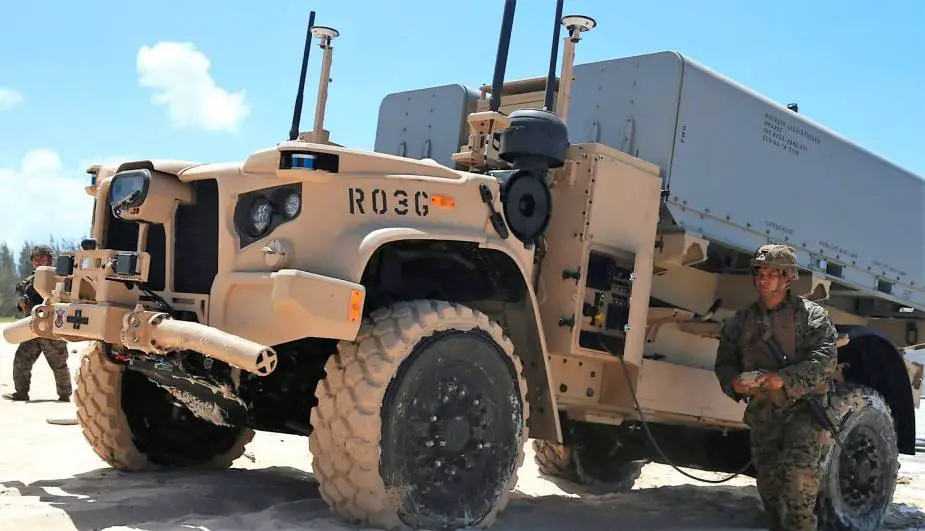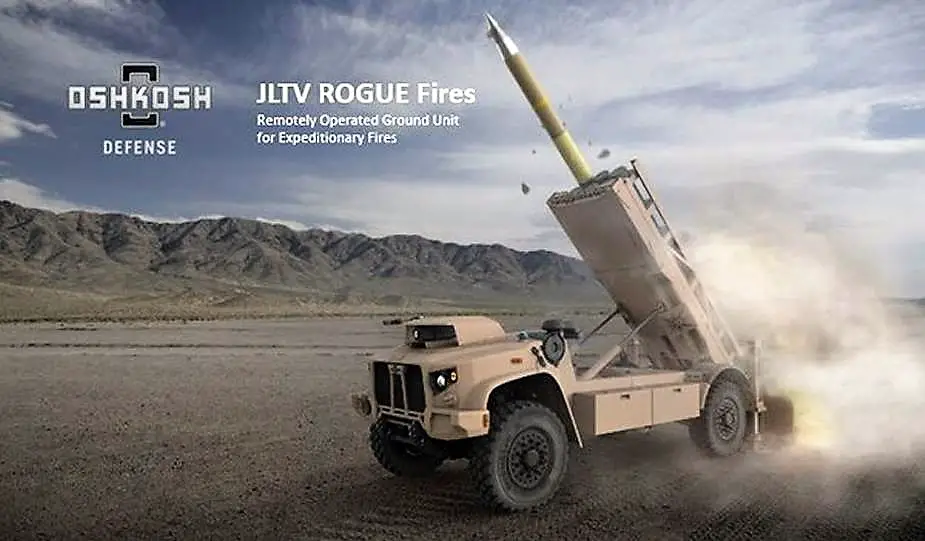The U.S. Department of Defense announced on December 22 that Raytheon Missiles & Defense is awarded a $21,164,178 firm-fixed-price, undefinitized contract for the production of the U.S. Navy/Marine Corps Expeditionary Ship Interdiction System (NMESIS) naval strike missile (NSM) launcher unit (NLU) and weapon control system (WCS) production representative models..
Follow Army Recognition on Google News at this link

U.S. Marines maneuver a Navy Marine Expeditionary Ship Interdiction System launcher at Pacific Missile Range Facility Barking Sands, Hawaii, Aug. 16, 2021. (Picture source: U.S. Marine Corps/Cpl. Luke Cohen)
NMESIS (Navy Marine Expeditionary Ship Interdiction System) is a land-based missile launcher platform that provides the Fleet Marine Force with an anti-ship capability. NMESIS integrates a NLU, capable of launching two NSMs, onto a Remotely Operated Ground Unit for Expeditionary Fires carrier. The NLU is controlled by the WCS located externally in a command and control vehicle. Work will be performed in Kongsberg, Norway (70%); Tucson, Arizona (15%); and Mooresville, North Carolina (15%). Work is expected to be completed in April 2023. Fiscal 2022 research, development, test and evaluation (Marine Corps) funds in the amount of $9,466,190 are being obligated at the time of award and will not expire at the end of the current fiscal year. This action is a follow-on production contract in accordance with 10 U.S. Code § 2371b(f). Marine Corps Systems Command, Quantico, Virginia, is the contracting activity.
As reported by Breaking Defense, NMESIS uses the anti-ship Naval Strike Missile made by Kongsberg; a control system operated remotely, dubbed ROGUE-Fires; and the modified chassis of an unmanned Oshkosh Defense JLTV. In August 2021, the service was able to demonstrate NMESIS during the Navy’s Large Scale Exercise off the coast of Kauai in Hawaii. Marines twice fired and hit a decommissioned vessel, as well as practiced loading and unloading NMESIS aboard a C-130 aircraft, according to Joe McPherson, program manager for long-range fires at Marine Corps Systems Command.
USMC's latest budget request included $28 million in research and development funding to continue to develop the weapon system. The Pentagon received $42 million in the fiscal year 2020 and $25 million FY21 for NMESIS. Billy Fabian, vice president of strategy at the data analytics firm Govini, said: "Prior to NMESIS, the United States lacked a land-based, anti-ship weapon. This is the first system that’s able to do that, so it is a big step up in capability for what they see these bases doing”.

NMESIS uses the anti-ship Naval Strike Missile made by Kongsberg, a control system operated remotely, dubbed ROGUE-Fires, and the modified chassis of an unmanned Oshkosh Defense JLTV. (Picture source: Oshkosh Defense)














